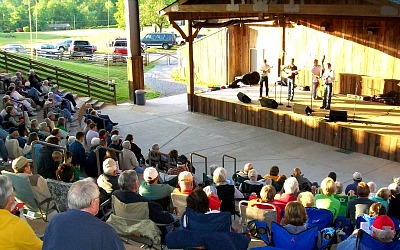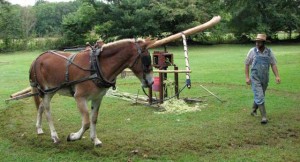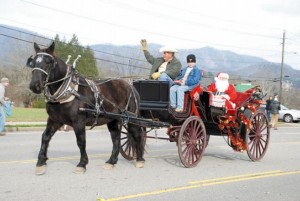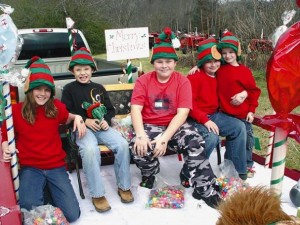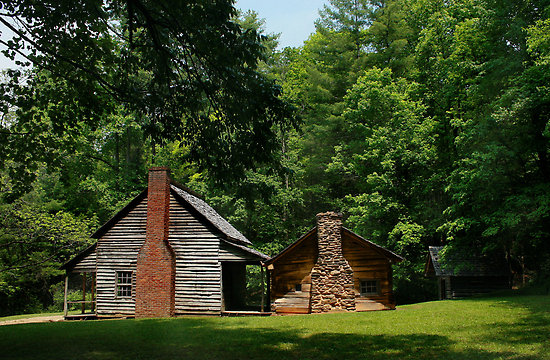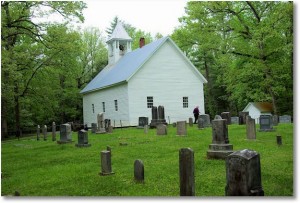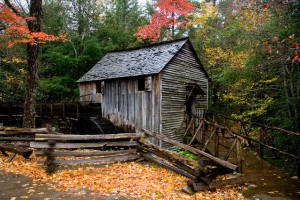2013 Winter Heritage Festival SchedulePresentations and programs throughout Townsend and the national park, celebrating the region’s cultural history. |
|
| RECEPTION | |
| Thursday, Jan. 31 | |
| 5-7 p.m. | Townsend Winter Heritage Festival Kickoff & Reception Join us for the Winter Heritage Festival Kickoff & Reception at the Townsend Artisan Gallery located at 7843 East Lamar Alexander Parkway. Refreshments provided by the Townsend Artisan Gallery and the Blount Partnership. Call 865.983.2241 to RSVP. |
| WINTER WOODY PLANT I.D. Great Smoky Mountain Institute at Tremont (9275 Tremont Road, Townsend, TN 37882, 865-448-6709) |
|
| Friday, Feb. 1 | |
| 9 a.m. | Do you know what to look for to identify trees and shrubs in the wintertime? Come along with Tremont Director Ken Voorhis into the forest and discover a number of leafless characteristics that will help you identify woody plants. The Smokies are a great place to explore in the wintertime! Meet at Tremont visitors center at 9 a.m., Friday, Feb 1 — prepare to be outside and on the trail.Tremont is located in the national park. Take Hwy 73 to the Townsend Wye, turn right toward Cades Cove, then take first left onto the road to Tremont. Tremont institute is 3 miles down this road, on the left. The visitors center is the first building, on the left, right after you cross the bridge. |
| PHOTOGRAPHY Smoky Mountain Visitor’s Center (7906 E. Lamar Alexander Parkway, Townsend, TN 37882) |
|
| Friday, Feb. 1 | |
| The Townsend Artisan Guild presents a photography tour for beginning to intermediate photographers using basic cameras to SLRs for $25.After several presentations on camera functionality, composition, and lighting, the participants have an opportunity to apply those principles with the guidance of Guild photographers at the Smoky Mountain Visitor’s Center.RSVP to Susan Cooper at suscoop@gmail.com or 865.448.0859 | |
| 9:00-9:15 a.m. | Welcome, Introduction, Coffee and muffins provided |
| 9:15-10:30 a.m. | How the Camera Works for Your Creative Vision |
| 10:30-11:15 a.m. | Elements of Composition: What Rules to Break |
| 11:15-noon | Using Light to Define the Subject |
| 12:00-12:30 p.m. | Lunch |
| 12:30-2:00 p.m. | Photograph in the Buildings at the Heritage Center |
| 2:00-2:30 p.m. | How to use Black and White to Improve Visualization |
| 2:30-3:00 p.m. | Q&A, Wrap Up |
| Susan Cooper has studied with nationally known professional photographers and captures images that reflect the natural world around us: landscapes, close-ups, wildlife and abstracts.Rex Gullufsen’s photographic experience includes weddings, documenting tours for choral performances, still lifes and natural surroundings. He captures stories through composition, texture, color and light.Ken LaValley has captured award winning images of youth sports, professional sports, concerts, weddings, and wildlife. He takes of advantage of light and luck to capture an image of one split second.
David Rudd has a long history of working in the wet darkroom and producing outstanding black and white images. His diligent study of the digital age and photographic techniques compliments his eye for unique compositions |
|
| Photography Exhibit and Artists Reception: Laurel Valley Resort (702 Country Club Drive, Townsend, TN 37882) is hosting an artist’s reception to which the participants and other visitors will be invited. Friday, Feb. 1 from 4-6 p.m. | |
| HIKING | |
| Friday, Feb. 1 | |
| 11:00 a.m. | Hike to Elijah & Polly Oliver’s place in Cades Cove (1.5 hours) Meet at Abrams Falls parking lot (half way around Loop Road). Dress for the weather. Subject to cancellation for inclement weather.Join Cades Cove Park Ranger Mike Maslona for a walk to Elijah & Polly Oliver place in Cades Cove. Learn about the family and see the only park historic site that has all the support buildings still there and available to see.Also, learn how the park’s historic preservation team maintains and repairs over 100 historic structures throughout the park, and how park partnerships with groups help to preserve the cultural history of the park.Email mike_maslona@nps.gov or 865.448.4104 to RSVP |
| Saturday, Feb.2 | |
| 10:00 a.m. | Hike the original back road to Walker Sisters House (4.5 hours) Meet at Metcalf Bottoms. Bring waterproof boots, water, lunch and snacks. Rain gear advised.Join Janet and Mark Snyder as they lead this moderate hike which takes you by the home sites of family and friends of the Walker Sisters. We will visit the home site of the only sister to marry. A greater appreciation of the Little Greenbrier Community will be achieved.Call 865.448.1183 to RSVP. |
| CADES COVE PRESERVATION ASSOCIATION (CCPA) CCPA has family exhibits on the second floor at the Heritage Center both days, from 10 a.m.- 4 p.m., where former Cades Cove residents and descendants are on hand both days to visit with people about their lives in the Cove. The exhibits contain photographs, family albums and artifacts for viewing by the public. |
| PRESENTATIONS Great Smoky Mountains Heritage Center (123 Cromwell Drive, Townsend, TN 37882) |
|
| Friday, Feb. 1 | |
| 9:00-9:45 a.m. | Joel Zachry – “How to Get Eaten by a Bear – Things you should know” Join naturalist and author Joel Zachry for an informative “show and tell” narrative on safely traveling in the backwoods of our Southern Appalachians. As he provides a historical perspective on the bear and its life cycle he will share factual information on the past 100 years of human fatalities. In addition, Zachry will recant his own experiences, some funny missteps and others with serious outcomes, from backpacking the Smokies since 1975, completing the 2,175 miles of the Appalachian Trail and guiding hikers in Alaska for twenty-five years. |
| 10:00-11:00 a.m. | Betty Boone Best – “A granddaughter tells about the war in Blount County” Betty Boone Best was born in Blount County and graduated from schools at Happy Valley, Lanier, Maryville College and the University of Tennessee. She taught language and Tennessee history at Walland School before retiring from William Blount High School as a librarian. She is a member of the Blount County Genealogical and Historical Society and is presently editor of the Blount Historical Journal. Her hobbies are family and local history research and writing. |
| 11:15-12:15 | David Ledbetter – “Little River Railroad” David Ledbetter is a member of Cades Cove Preservation Association, having as president, vice president and board member. He currently serves as coordinator with the maintenance supervisor for Great Smoky Mountains National Park where he plans projects and workdays in the park and leads a full moon walk in Cades Cove once a month. A native of Miller’s Cove, the Ledbetter family settled in the White Oak Sinks and lived there for many years before moving out in 1929. David is the great grandson of Matthew Manuel (Bud) Ledbetter who was the first of his line to settle in the White Oak Sinks. |
| 11:15-12:15 | David Ledbetter Jr. – “Fire Towers From the Smokies” David Ledbetter, Jr. (Davey) is the son of David and Paulette Ledbetter and is the great great grandson of Matthew Manuel (Bud) Ledbetter who settled in White Oak Sinks. Davey has hiked to the White Oak Sinks and seen where his family farmed the area for many years. Davey enjoys hiking and especially finding old home sites. He is currently mapping these areas and putting it together with his family names. |
| 12:15-1:30 p.m. Lunch | |
| 1:30-2:30 p.m. | Judy Myers Johns & Verna Burchfield Myers – “Aunt Becky Cable” Judy Myers Johns grew up in Cades Cove and is a descendant of John and Lauraine Oliver, from Russell Gregory (Gregory Bald), Robert Burchfield and John P. Cable. She lived in three houses in Cades Cove without electricity, learned to cook on a woodstove and did “washing” in a gasoline powered washer with a wringer for the rinse tub. Her parents (Hugh and Verna Burchfield Myers) and grandparents (Charlie and Mae Shuler Myers) farmed the Cove and raised cattle. Judy worked as a historical interpreter at Cable Mill, became a National Park Ranger, left to work in nuclear security before becoming a Vice President of Emergency Preparedness for international work with a fortune 100 company.Verna Lee Burchfield Myers was born on Mill Creek in Cades Cove in Oct. 1932 as the second of three children. At a early age the family moved to Townsend and then to Maryville as her father sought employment at a diary farm and then the Aluminum Company of America. In 1948 she married Hugh Myers and moved back to Cades Cove where they farmed and ran Cades Cove Riding Stables until 2009. Verna is very in-tune with her heritage and “regrets not taking an interest” in that heritage until later in her life. Verna has fond memories of Cades Cove and takes time to document old family photos and short stories that have been passed down through the years. |
| 2:45-3:45 p.m. | Allen Coggins – “An armchair tour of the Smokies: From Sugarlands to Clingmans Dome” Allen Coggins is a freelance writer and part-time subcontractor with Oak Ridge Associated Universities. His presentation today is based upon his nearly decade long experience as a Smoky Mountain tour bus guide. He is author of the book, Place Names of the Smokies, which was published by the Great Smoky Mountains Association in 1999. His latest book, Tennessee Tragedies: Natural, Technological, and Societal Disasters in the Volunteer State, was just published by the University of Tennessee Press. |
| 4:00-5:00 p.m. | Panel Discussion: Former residents of Cades Cove |
| Saturday, Feb. 2 | |
| 9:00-9:45 a.m. | Joel Zachry – “Special Creatures of our Smokies and Southern Appalachians” Join naturalist and author Joel Zachry as he shares some of our region’s most Fascinating creatures through his years of observing and photographing Smokies flora and fauna. For this presentation he goes beyond the ability to imply capture the organism but to also explain interesting facts about how each survives in the wild and coexists with others in its habitat. As a career biologist, Zachry will share his views on favorite landscapes, wildflowers and mammals that make our national park a special place. |
| 10:00-11:00 a.m. | Betty Bales & Becky Thompson – “Dinner on the ground” Betty Bales is a native Tennessean who lives in Maryville and is a registered nurse with Blount Memorial Hospital. Betty is the granddaughter of John and Lilly Cooper Whitehead, descendants of Cades Cove. She enjoys researching the history of her Smoky Mountain Heritage, working with women’s ministries and serving in the mission field both locally and in South America.Becky Thompson is very proud of her Smoky Mountain Cades Cove heritage in the Whitehead and Cooper families. She is often found taking pictures and exploring the many trails, churches and heritage sites in the mountains. |
| 11:15-12:15 | Missy Tipton Green – “Tuckaleechee Cove” Missy Tipton Green was born and has lived all her life in Blount County, and descends from the first land grant owner in Cades Cove, William “Fighting Billy” Tipton. She has penned three books, two being co-authored with Paulette Ledbetter. She enjoys researching the history of Cades Cove and Blount County, and genealogy. She is a charter member of the Cades Cove Preservation Association, serving on the Board of Directors for 11 years, past secretary, past treasurer, and past co-director of the Cades Cove Museum. |
| 12:15-1:30 p.m. Lunch | |
| 1:30-2:30 p.m. | Larry Sparks – “Tom Sparks – The Spencer Field herder” Larry Sparks is a Cades Cove native, one of twelve children born to Asa and Amy Burchfield Sparks. His presentation is about his grandfather Tom Sparks, a former owner of Spence Field, where he herded livestock for several years. Sparks’ ancestors were among the first to own land and live in the Cove. His immediate family was forced to sell their land with the establishment of the Great Smoky Mountains National Park in the 1930s, but although most neighbors moved out, his family remained in the Cove as leaseholders until 1960. He serves on the board of the Cades Cove Preservation Association, and is a member of the First Families of Tennessee as a descendant of Col. John Tipton. He writes and presents Cades Cove history. |
| 2:45-3:45 p.m. | Bernard Myers – “Myers Town” Bernard Myers was born to Golman and Viola Burchfield Myers of Cades Cove, living there until the age of nine attending the Cable School for one year before it closed down; he finished school at Townsend High School. |
| 4:00-5:00 p.m. | Panel Discussion: Former residents of Cades Cove |
| DOWSING CLASS Smoky Mountain Visitor’s Center (7906 E. Lamar Alexander Parkway, Townsend, TN 37882) |
|
| Saturday, Feb. 2 | |
| The class consists of the history of dowsing, what to expect from their visit and my experiences using the rods for underground objects (water, graves, pipes, etc.). We will demonstrate the dowsing rods and forked stick with each visitor is given a set of dowsing rods to try what they have learned. The class continues outside, weather permitting, to locate water and a trip to the cemetery if they wish. | |
| 10:30-11:30 a.m. | Charlie Monday – “The Art of Dowsing: Do you have the gift?” |
| 2:00-3:00 p.m. | Charlie Monday – “The Art of Dowsing: Do you have the gift?” |
| LIVE MUSIC Smoky Mountain Visitor’s Center (7906 E. Lamar Alexander Parkway, Townsend, TN 37882) |
|
| Saturday, Feb. 2 | |
| 12:00-2:00 p.m. | Live Bluegrass music will be performed |
| 3:00-4:00 p.m. | Live Bluegrass music will be performed |
| PRECIOUS MEMORIES VII A homecoming of former residents of Cades Cove, to be held Sunday, Feb. 3 from 2-4 p.m. at Big Valley Resort, 7056 E. Lamar Alexander Parkway in Townsend. The Big Valley Resort is on the right just after the four-lane highway starts in Townsend. Turn right at the motel just past the porta-potty yard and drive to the clubhouse at the end of the road. Light refreshments will be served. |
| BOOK SIGNING Smoky Mountain Visitor’s Center (7906 E. Lamar Alexander Parkway, Townsend, TN 37882) |
|
| Feb. 1-2 | |
| The Great Smoky Mountains National Park (A Postcard History) Author Adam H. Alfrey will be on hand both days to visit and sign copies of his new book, The Great Smoky Mountains National Park (A Postcard History). Drawing from public and private collections of vintage postcards, Alfrey, curator of exhibitions at the East Tennessee History Center, illustrates how a rallying cry for preservation, pleasure and profit sustained a successful grassroots campaign to create Great Smoky Mountains National Park, the most visited national park in the United States. |
